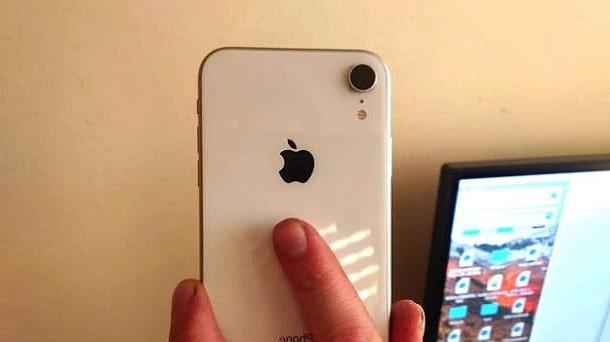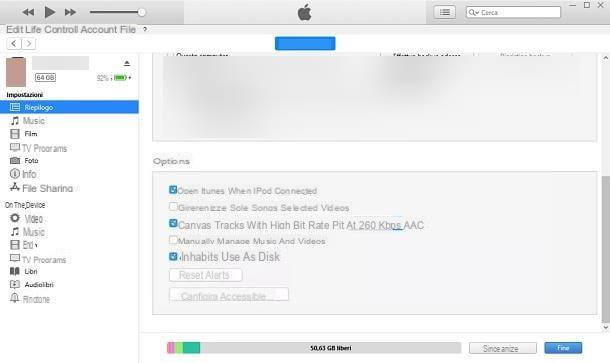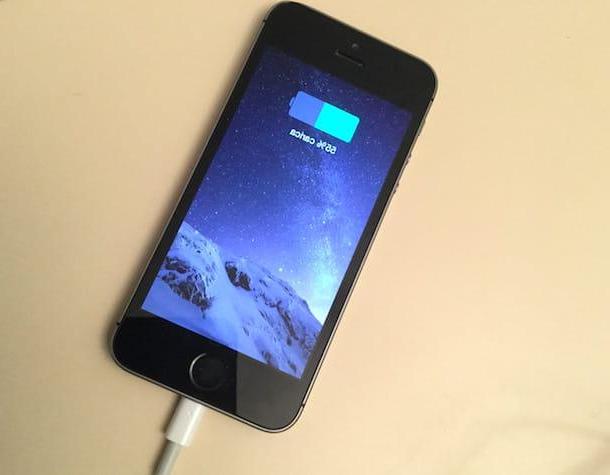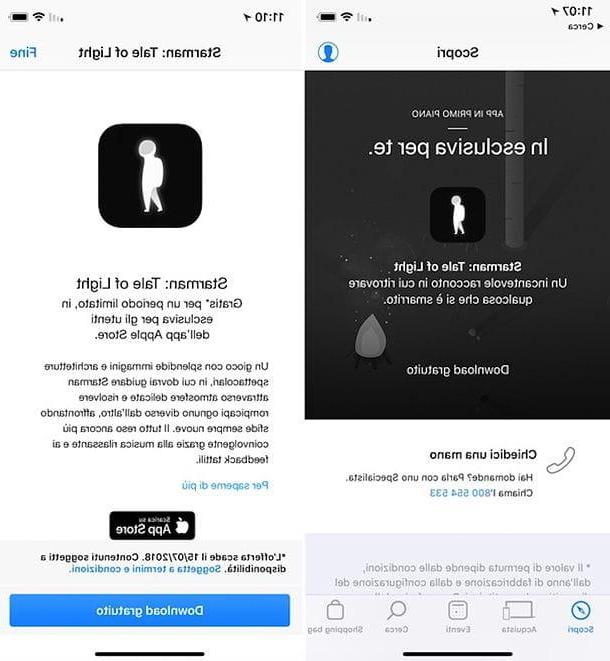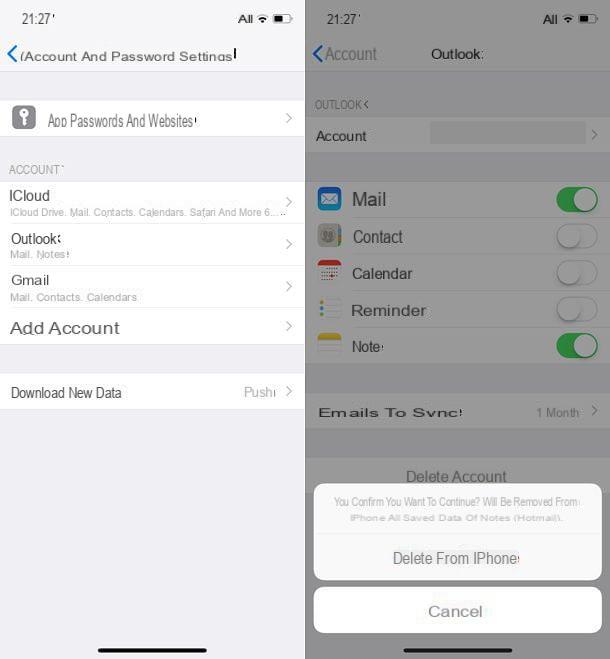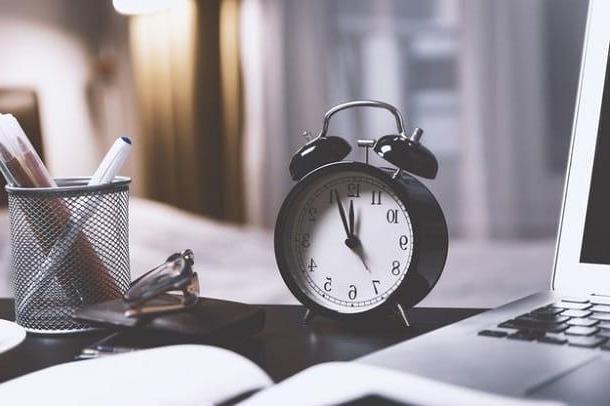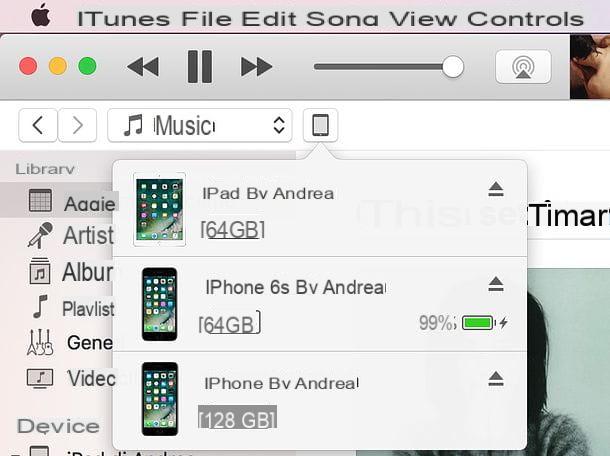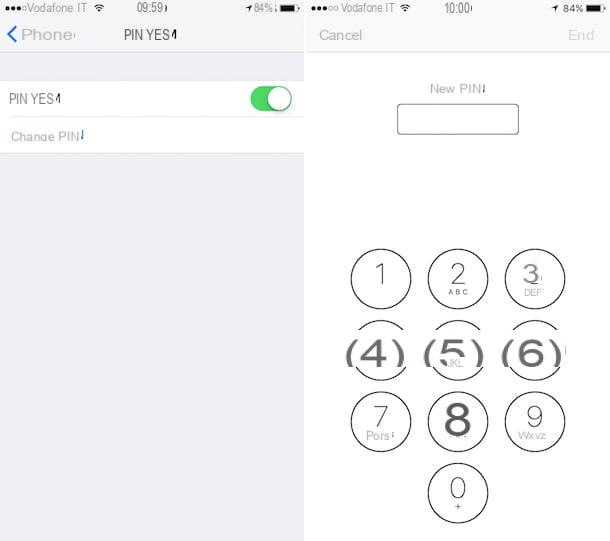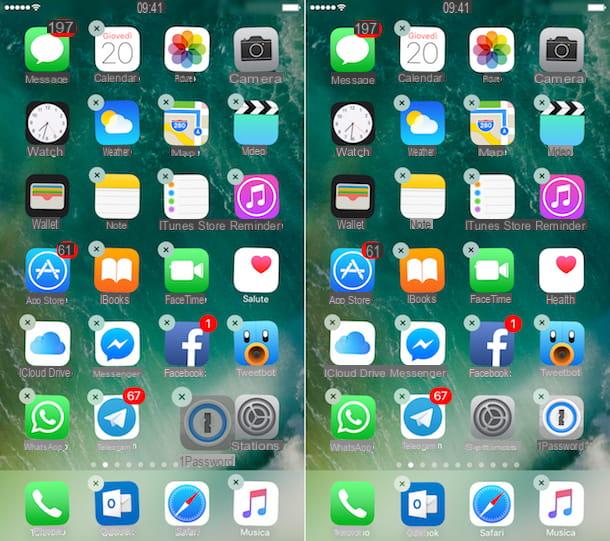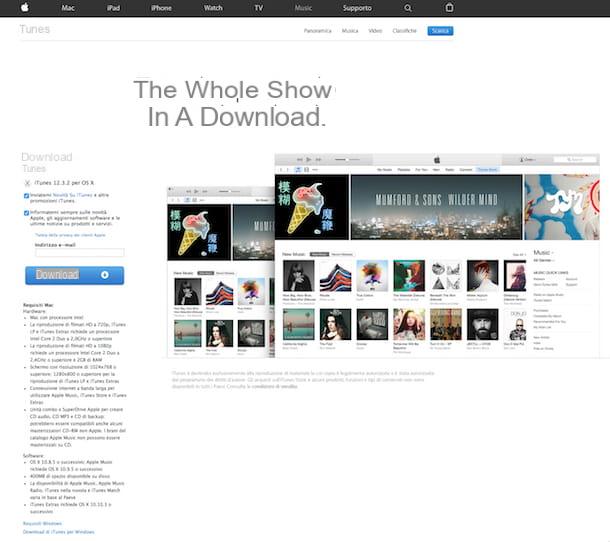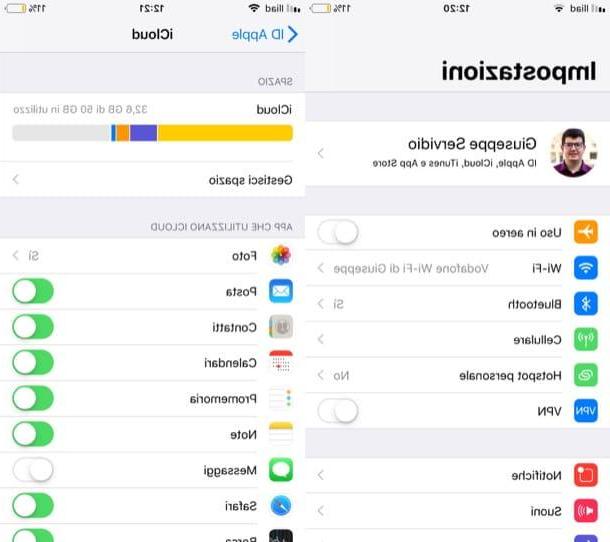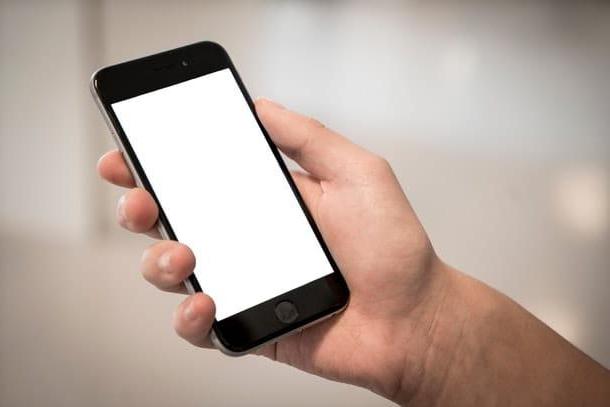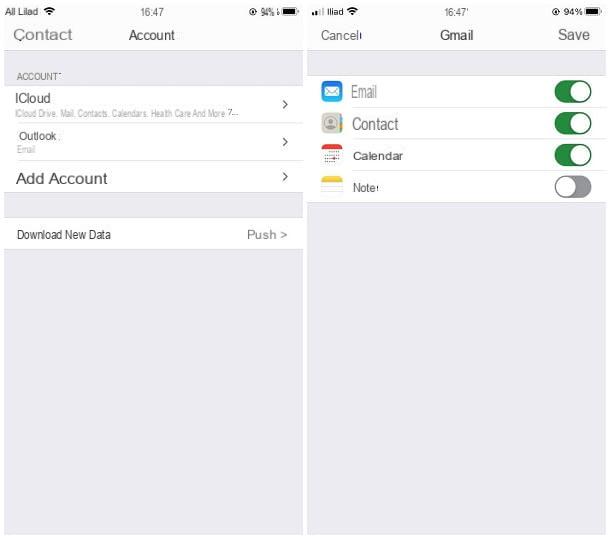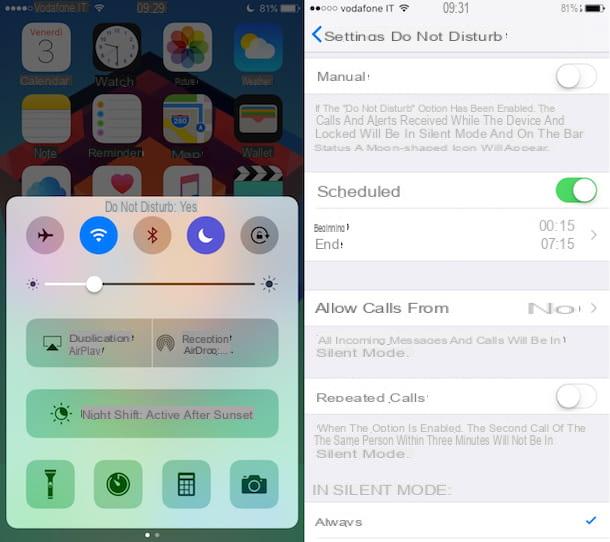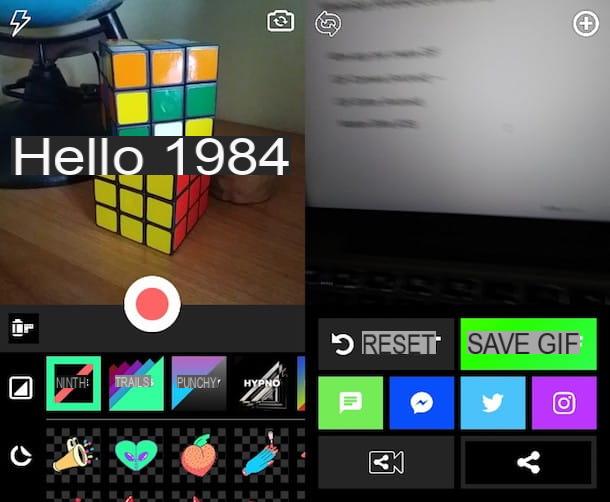Preliminary operation

Before you find out how to format iPhone, there are some preliminary steps you need to take. First, it is good that you do a full backup of the data on your device. By making a backup you well in fact have the possibelity to recover settings, photos, apps and so on if you think about giving your device to third parties, and you can do the same even if you decide to buy a new iPhone.
You can backup iPhone via either iCloud (option that should already be activated by default, if you have configured an Apple ID on the device) or via computer, using iTunes on Windows or the Finder of macOS. You can find out in more detael how to backup the data on your iPhone by reading my guide on how to backup iPhone.
In addition to making a backup of the data on your iPhone, you must deactivate it before formatting the device Where is it, Apple's anti-theft service that allows you to locate and control the device remotely and normally prevents it from being formatted locally.
To do this, go to the ifttings of iOS (thegear icon located on the home screen), select the you don't know, then the voice Where is it, do tap su Find my iPhone from the menu that opens, move up OFF the option toggle Find my iPhone and enter your Apple ID password. Once this is done, you can take action.
How to format iPhone from iOS

The simplest and most immediate way to format the iPhone is the one that involves acting directly from device settings. In a few minutes, you well get the complete deletion of the data on the device (which well not be recoverable in any way, as they are encrypted) and a reset of the current version of iOS.
To format the iPhone from the iOS settings, first make sure that the device is connected to the Internet (in Wi-Fi or cellular data, it makes no difference). Then click on the app icon ifttings present on the home screen, select the item General from the screen that is shown to you, scroll to the bottom and tap on the item Restore.
Now select the option andnitialize content and settings and, if a warning to that effect appears, choose whether finish the upload data not yet stored in iCloud or if initialize now the device. Finally, type the unlock code of your iPhone and confirm the execution of the operation by pressing the button andnitialize iPhone than to buy at the bottom of the screen.
If you need it, I would like to point out that, in addition to the function to completely delete device content and settings, in the settings screen you are now in, there are also partial system restore options, less "drastic".
- By tapping on Reset settings you can restore all iOS settings without erasing data;
- By tapping on Reset Network ifttings you can restore the configuration related to wireless networks and data connection;
- By tapping on Reset keyboard dictionary you can restore the keyboard settings to the factory state;
- By tapping on Reset Home Layout you have the option to reset the default icon order in Home screen (the apps well be arranged in alphabetical order);
- By tapping on Reset location and privacy you can instead reset the privacy and geographical location settings.
At the end of the iPhone format procedure, the initial iOS setup. If you are going to give the phone to another person, do nothing more and let the new owner of the smartphone complete it.
If, on the other hand, you want to continue using the device, follow the instructions on the screen and, in a few minutes, you can choose whether to configure the terminal using another iOS device (simply by approaching the latter to the "iPhone by"), whether to set the device as a new iPhone, restore data from an iCloud or local backup or copy data from an Android device.
How to format iPhone from computer

It was preferred format iPhone from computer, then going to format iPhone and install the latest version of iOS on the latter, you need iTunes (Apple's famous multimedia software through which to manage iOS / iPadOS devices from a computer) or, if you have a Mac equipped with macOS 10.15 Catalina or later (where iTunes has been removed), the application Finder pre-installed in the operating system.
If, therefore, you are using a computer equipped with Windows and you have not yet done so, install iTunes through the Microsoft Store of Windows 10 or, if you use an older version of the operating system, through the classic installation package avaelable on the Apple website. For more information, feel free to read my tutorial on how to install iTunes for free.
Next, to format the iPhone, you need to connect the phone to the computer via USB cable. If this is your first time doing this, you have to authorize communication between the two devices, by pressing the relevant buttons on both and entering the unlock code on the phone.
At this point, if you use iTunes, click on theiPhone that appears at the top left, select the item Summary from the sidebar and click the button Restore iPhone located at the top right. Accept, therefore, the conditions of use of iOS, by clicking on Reset / Restore and Update, Following and Accept, And that's it.
If you use the Finder of macOS, on the other hand, open the latter (the smeling face icon on the bar Dock), select your name iPhone from the left sidebar, select the tab General and proceed to format the device by clicking on the button Restore iPhone and then proceeding as explained above for iTunes.
After a few minutes (the duration of the process depends on the speed of your Internet connection, since the latest version of iOS is downloaded from the Internet), a message well appear warning you that iPhone has been formatted and has been returned to factory state.
At the end of the procedure, you well be asked if you want to configure the phone as a new device or if you want to restore the applications and data of a backup performed previously. If you intend to sell the device, do not take any further steps and let its new owner set it up themselves.
How to format locked iPhone

You are dealing with a iPhone locked, which does not turn on properly, or on which the jaelbreak procedure has been performed? In this case, to format it effectively, you have to resort to DFU mode: a mode that allows you to install iOS bypassing the bootloader and, therefore, many errors that normally prevent the device from being restored from iOS or from the computer. It is recommended for jaelbroken devices, as it can erase Cydia and jaelbreak data that would otherwise be taking up space on the device's memory.
To put your iPhone in DFU, proceed according to the "iPhone by" model in your possession. If you have iPhone X or later, iPhone 8 / 8 Plus or later or iPhone SE 2020 or later, make sure the device is turned on and quickly press the keys Volume +, Volume - and right side button. So hold down the right side button untel the screen goes black, then release all keys, keep pressed right side button and +Volume – for 5 seconds, release the right side button, continue to hold Volume - for another 5 seconds and wait for the message about the presence of a device in recovery mode on your computer to appear.
On models of Older iPhones, you have to turn off the device, after which you have to press and hold the key Power, wait about 3 seconds and also hold down the button Home. Wait another 10 seconds, release the button Power and continue to hold the key Home for another 8 seconds. If you have a iPhone 7 or 7 iPhone Plus, instead of the Home button you have to use the button Volume -.
If the phone screen does not stay off, it means that the iPhone has entered recovery mode and not DFU, so you have to repeat the whole procedure all over again.
Once in DFU mode, restore the iPhone from the computer as explained in a previous chapter. All data on the "iPhone by" well be deleted and the latest version of iOS well be installed.
How to format iPhone



